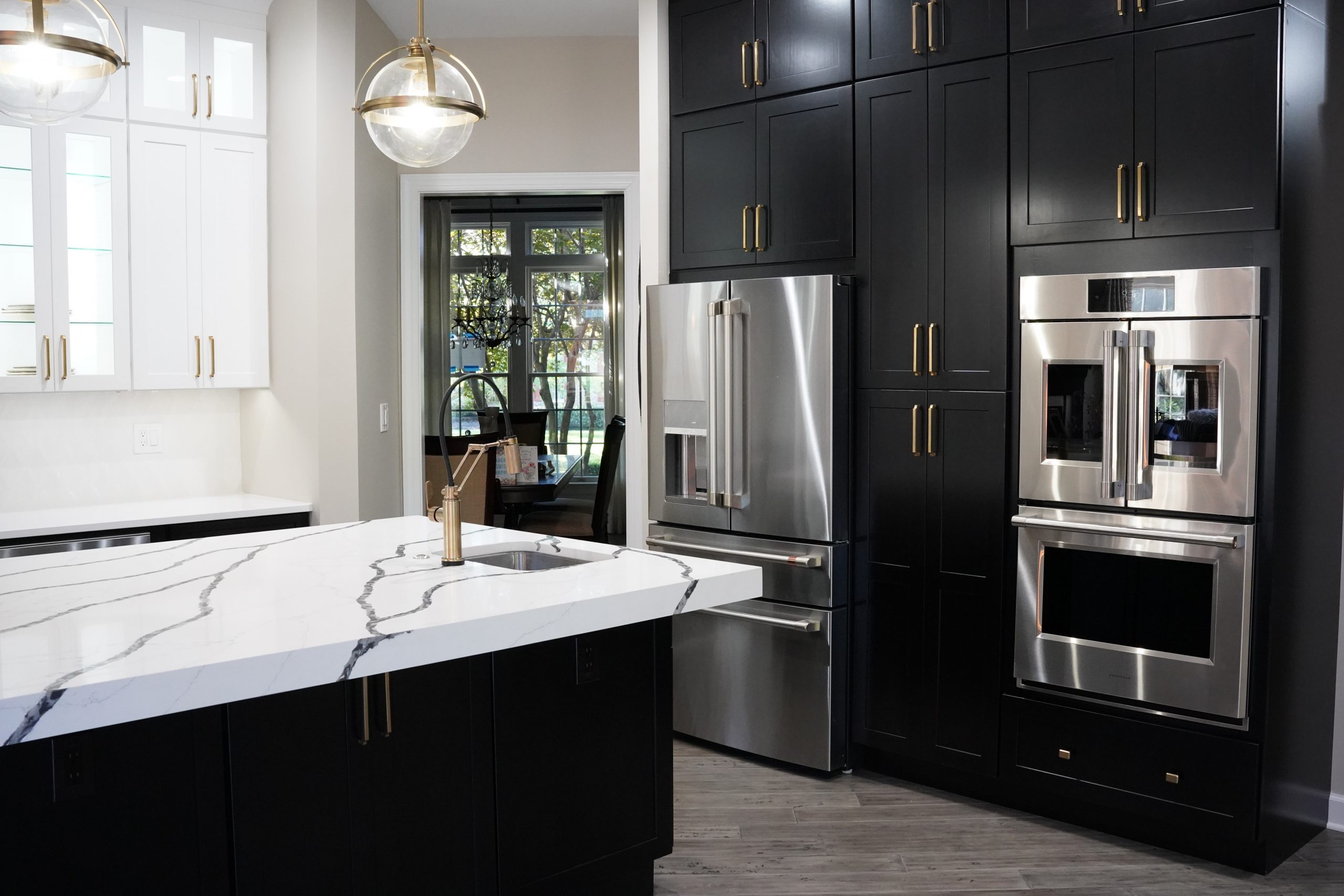Are you thinking about adding a kitchen island to your home? Kitchen islands are a popular feature in many modern kitchens, offering increased counter space, storage, and other benefits. However, there are many things to consider before adding them to your home. The cost is certainly one of the most important factors to consider. On average, it can range from $3,000 to $10,000, but this can vary based on the size, materials, and whether you plan to have a sink or appliances installed on the island, as well as the local labor rates.
What is a Kitchen Island?
A kitchen island is a freestanding countertop that is separate from the main counter. Kitchen islands can be stationary or mobile and can be used for a variety of purposes, such as food preparation, dining, and storage.

Benefits of Adding a Kitchen Island
These are the several benefits to your kitchen, including:
- Increased counter space: Kitchen islands provide additional counter space, making it easier to prepare food and cook for large groups of people.
- Additional storage: Kitchen islands also offer additional storage space for cookware, dishes, and other kitchen items.
- Improved kitchen traffic flow: By separating the main kitchen area from the kitchen island, you can improve the flow of traffic in your kitchen.
- Enhanced entertaining and socializing opportunities: Kitchen islands can provide a convenient space for entertaining guests, whether it be for drinks, appetizers, or a full meal.
- Increased home value: An island can increase the value of your home, especially if you choose high-quality materials and a design that fits with the overall style of your home.
What to Consider
It’s important to consider the following:
- Available space and layout: It’s important to have enough space for an island, as well as the right layout to accommodate it.
- Kitchen island size and layout: The size and layout of your island should be proportionate to the size of your kitchen and should be functional and efficient.
- Kitchen island design ideas: Consider the design and style of your kitchen island. It should complement the existing décor of your kitchen.
- Countertop materials: There are several materials to choose from when it comes to kitchen island countertops, including granite, marble, quartz, and butcher block.
- Adding electrical and plumbing: If you plan to install appliances or a sink in your kitchen island, it’s important to plan for electrical and plumbing work.
- Storage options: Think about the types of storage you need in your kitchen island, including drawers, cabinets, and shelves.
- Lighting considerations: Proper lighting is essential for a functional kitchen island. Consider adding pendant lights or recessed lighting to illuminate the space.
- Seating options: If you plan to use your kitchen island for dining, consider adding seating options such as stools or chairs.
- Cost and budgeting: Kitchen islands can be expensive, so it’s important to establish a budget and stick to it.
- Installation process: Installing a kitchen island can be a complex process, and it’s important to work with a professional to ensure that it is done correctly.

Cost of Adding a Kitchen Island
On average, the cost of adding an island can range from $3,000 to $10,000, but this can vary based on many factors.
Here is a detailed breakdown of the costs:
- Size of the Island: A small island of about 24 square feet can cost as low as $1,500 while a larger island of 40 square feet or more can cost over $5,000 just for the materials and installation.
- Materials: The choice of materials can significantly affect the cost. Here are some average costs for different materials:
- Laminate: $20 – $50 per square foot
- Granite: $50 – $200 per square foot
- Marble: $125 – $250 per square foot
- Quartz: $50 – $150 per square foot
- Butcher block: $55 – $200 per square foot
- Sink, Appliances, and Electrical Outlets: Adding a sink, appliances, or electrical outlets will increase the cost. For example:
- Sink installation: $200 – $500
- Dishwasher installation: $500 – $2,000
- Electrical outlets: $100 – $300 per outlet
- Labor: Labor costs can vary based on your location and the complexity of the installation. On average, labor costs for installing an island can range from $50 to $100 per hour.
- Additional Features: Adding features like a breakfast bar, additional cabinets, or a wine rack will also increase the cost.
This is just an example and the actual cost may vary based on your specific requirements and local labor rates.

When Should You Not Have It?
While kitchen islands have many benefits, they may not be suitable in all situations. Here are some reasons why you may not want to have an island:
- Lack of space: If your kitchen is already small, adding an island may make it feel cramped and crowded. It’s important to consider the available space and layout of your home before deciding whether or not to add one.
- Limited budget: Kitchen islands can be expensive, especially if you need to add electrical and plumbing lines. If you have a limited budget, you may want to consider other options for improving your kitchen.
- Not matching with the style: If your kitchen has a very specific style, adding an island that doesn’t match could look out of place. It’s important to consider the overall design of your kitchen before making any major changes.
Conclusion
Adding a kitchen island can be a great way to enhance the functionality and style of your kitchen. Consider key factors like space, layout, design, materials, and costs to ensure the island suits your needs. Also, remember it may not be ideal in situations with limited space, budget, or style mismatches. With careful planning and consideration, an island can be a valuable addition to any kitchen. Happy remodeling!

